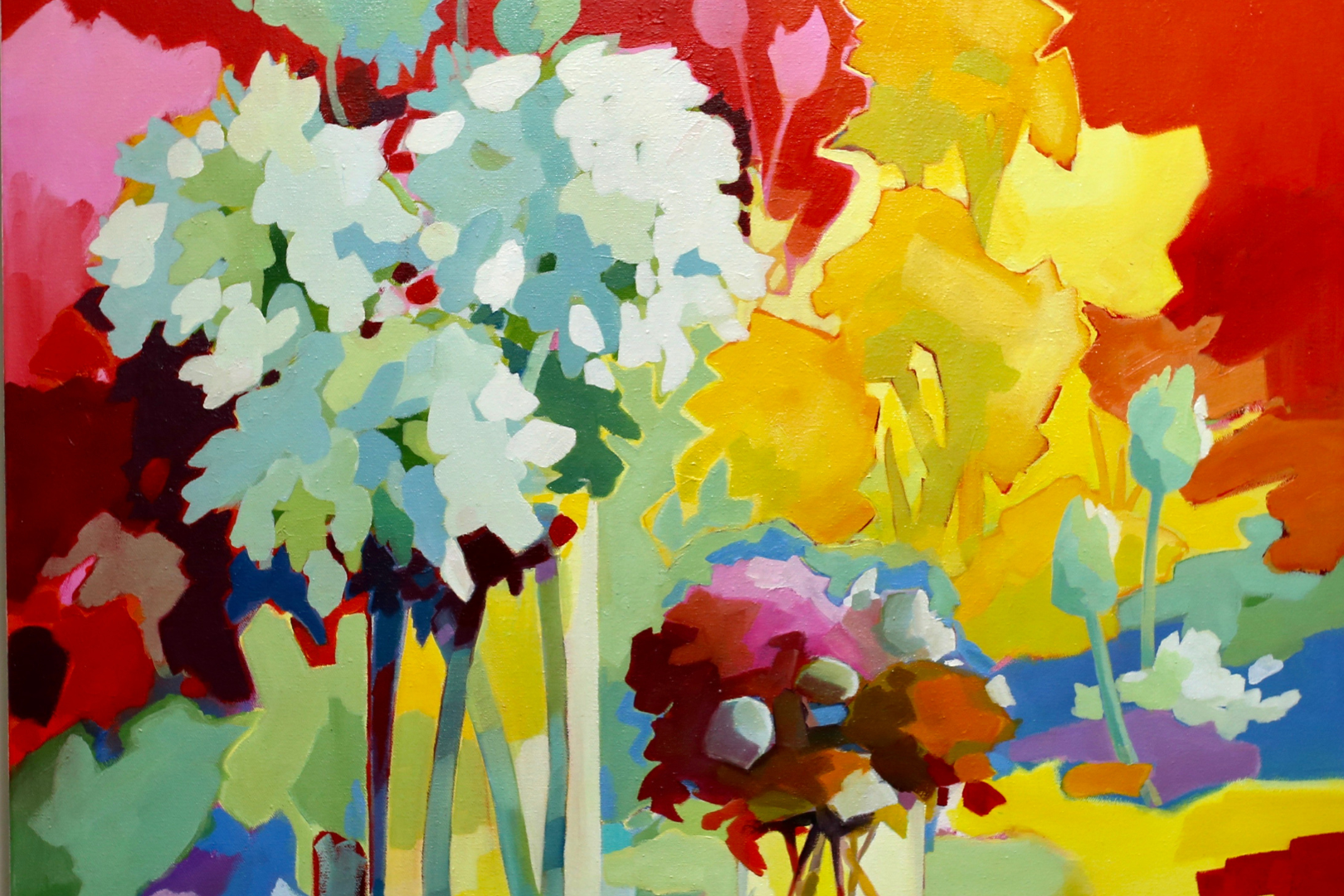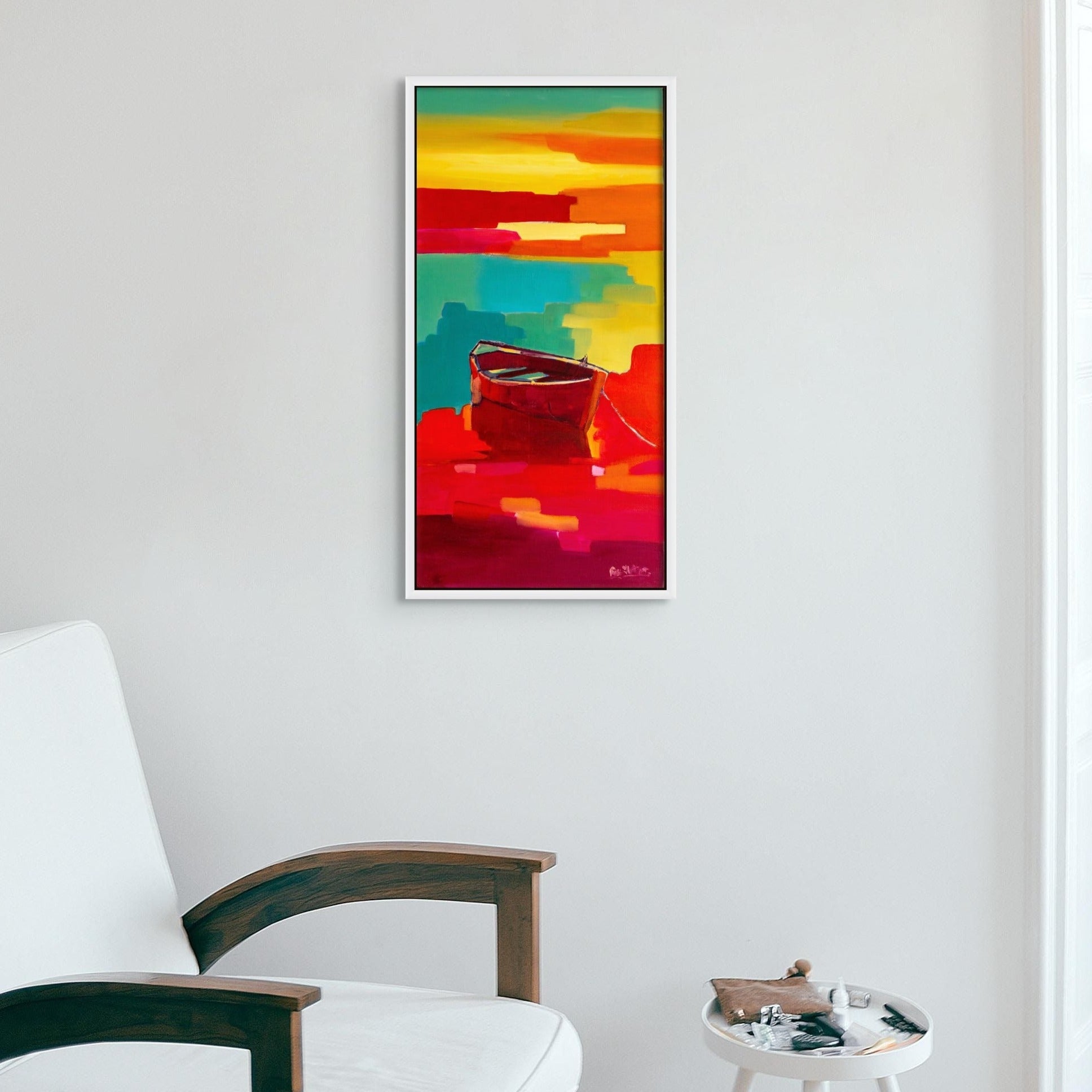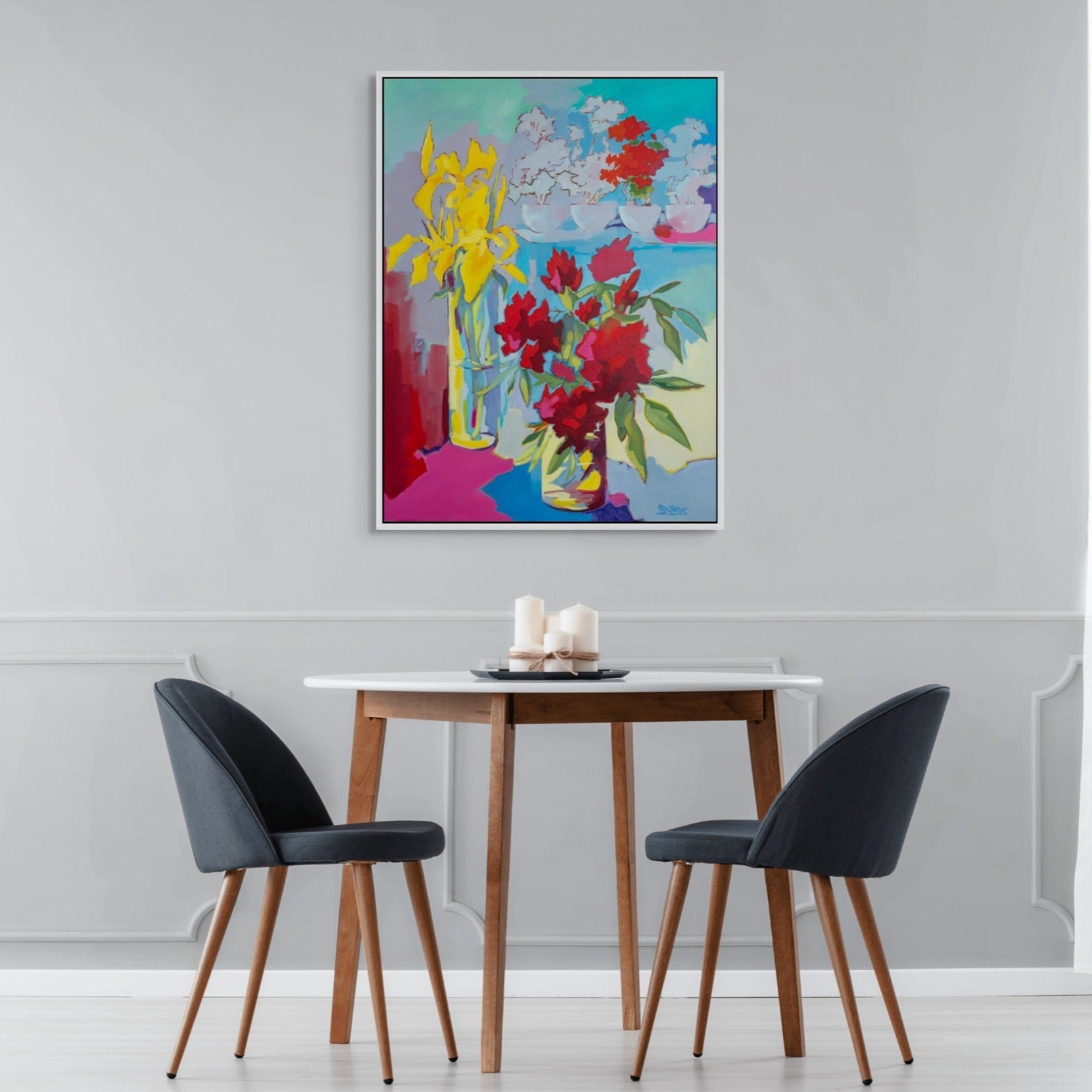My paintings are a panacea. A chance to indulge the senses and celebrate what is good in our world and dwell on that.
To engage with my work an understanding of the Vanitas is useful. The Vanitas was a genre of still life painting practiced in the Netherlands in the early 17th century.Vanity is the English translation. " A Vanitas painting contains collections of objects symbolic of the inevitability of death and the transience and vanity of earthly achievements and pleasures" (Vanitas, Britannica. com) Given the centrality of Christianity within the Flemish environment, the modus operandi of the genre was" to exhort the viewer to consider (their) mortality and repent" (Britannica). Early examples were sombre and lacking in colour. Over the century this changed. Paintings became about the vanity of the artist's skill and ultimately about ownership of these meticulously rendered paintings.
We live in a world where the doomsday clock is permanently set close to midnight. These works exhort the viewer to consider life in all its fullness. Flowers frequently depicted in the Vanitas as symbols of transience, are executed here in fully saturated colour, demonstrating Joie de Vivre, and are a counterpoint to the oppressive black. Surrounding yourself in colour and life is a tonic for the epidemic of depression and heaviness that has become harder as globally nations endure war and suffering.
My paintings are a panacea. A chance to indulge the senses and celebrate what is good in our world and dwell on that.
To engage with my work an understanding of the Vanitas is useful. The Vanitas was a genre of still life painting practiced in the Netherlands in the early 17th century.Vanity is the English translation. " A Vanitas painting contains collections of objects symbolic of the inevitability of death and the transience and vanity of earthly achievements and pleasures" (Vanitas, Britannica. com) Given the centrality of Christianity within the Flemish environment, the modus operandi of the genre was" to exhort the viewer to consider (their) mortality and repent" (Britannica). Early examples were sombre and lacking in colour. Over the century this changed. Paintings became about the vanity of the artist's skill and ultimately about ownership of these meticulously rendered paintings.
We live in a world where the doomsday clock is permanently set close to midnight. These works exhort the viewer to consider life in all its fullness. Flowers frequently depicted in the Vanitas as symbols of transience, are executed here in fully saturated colour, demonstrating Joie de Vivre, and are a counterpoint to the oppressive black. Surrounding yourself in colour and life is a tonic for the epidemic of depression and heaviness that has become harder as globally nations endure war and suffering.
My paintings are a panacea. A chance to indulge the senses and celebrate what is good in our world and dwell on that.
To engage with my work an understanding of the Vanitas is useful. The Vanitas was a genre of still life painting practiced in the Netherlands in the early 17th century.Vanity is the English translation. " A Vanitas painting contains collections of objects symbolic of the inevitability of death and the transience and vanity of earthly achievements and pleasures" (Vanitas, Britannica. com) Given the centrality of Christianity within the Flemish environment, the modus operandi of the genre was" to exhort the viewer to consider (their) mortality and repent" (Britannica). Early examples were sombre and lacking in colour. Over the century this changed. Paintings became about the vanity of the artist's skill and ultimately about ownership of these meticulously rendered paintings.
We live in a world where the doomsday clock is permanently set close to midnight. These works exhort the viewer to consider life in all its fullness. Flowers frequently depicted in the Vanitas as symbols of transience, are executed here in fully saturated colour, demonstrating Joie de Vivre, and are a counterpoint to the oppressive black. Surrounding yourself in colour and life is a tonic for the epidemic of depression and heaviness that has become harder as globally nations endure war and suffering.
Model Boats
Colour and light always feature strongly in my work. Constant delight is found in everchanging landscapes, whether it be cascading sunsets admired during beach strolls or the scintillating dance of light upon the waters edge. These daily visuals are forever inspiring. Throw a boat into the scene, and a bold sculptural form appears, creating rich shadows and colourful patterns – once ordinary craft become vibrant confident models.
$875.00
$1,980.00
$1,980.00





